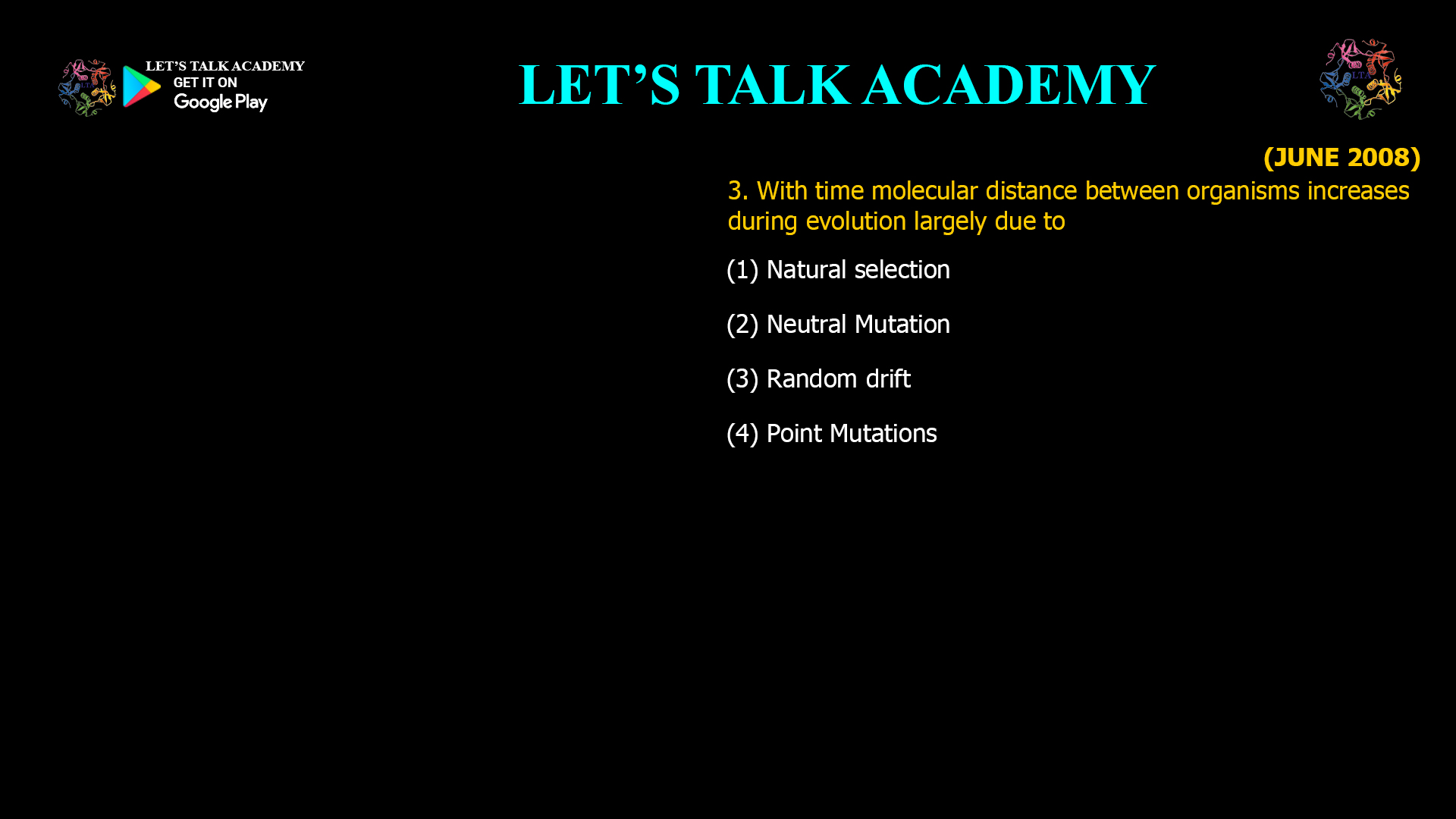- With time molecular distance between organisms increases during evolution largely due to
(1) Natural selection (2) Neutral Mutation
(3) Random d rift (4) Point MutationsHow Neutral Mutations Drive Molecular Distance in Evolution
As species evolve and diverge from common ancestors, the molecular distance—the number of differences in DNA or protein sequences—between them steadily increases. Understanding the underlying cause of this growing molecular distance is essential for interpreting evolutionary relationships and the genetic diversity of life. The main driver of this phenomenon is neutral mutation.
What Is Molecular Distance?
Molecular distance refers to the genetic differences that accumulate between two lineages over time. These differences are measured by comparing DNA, RNA, or protein sequences and are crucial for constructing evolutionary trees and estimating divergence times.
The Neutral Theory of Molecular Evolution
The neutral theory of molecular evolution proposes that most evolutionary changes at the molecular level are not caused by natural selection but by the random fixation of neutral mutations—mutations that do not affect an organism’s ability to survive and reproduce124568. Because these mutations are neither advantageous nor disadvantageous, their fate is determined by random genetic drift rather than selection.
Why Neutral Mutations Are the Main Cause
-
Neutral mutations accumulate steadily: Since neutral mutations do not impact fitness, they are not removed by natural selection. Over generations, these mutations build up in the genome, gradually increasing molecular distance between populations or species1458.
-
Random genetic drift: The fixation of neutral mutations in a population is governed by chance events, not selective advantage. This process leads to genetic divergence even in the absence of environmental pressures1468.
-
Natural selection and adaptive mutations: While natural selection is crucial for shaping adaptive traits, it acts on a minority of mutations. Most mutations in functionally important regions are either neutral or deleterious, with deleterious ones being rapidly eliminated and neutral ones persisting and accumulating245.
Supporting Evidence
Genomic studies consistently show that a large proportion of molecular differences between species are due to neutral mutations rather than adaptive changes. This is why the molecular clock—the concept that genetic divergence occurs at a relatively constant rate—is based on the accumulation of neutral mutations6.
Why Not Other Options?
-
Natural selection: Primarily removes deleterious mutations and fixes beneficial ones, but these events are rare compared to the steady accumulation of neutral mutations.
-
Random drift: While genetic drift is the process by which neutral mutations become fixed, it is the presence of neutral mutations themselves that increases molecular distance.
-
Point mutations: These are changes at a single nucleotide, but only those that are neutral (not affecting fitness) contribute significantly to the steady increase in molecular distance over time.
Conclusion: The Central Role of Neutral Mutation
The increase in molecular distance between organisms during evolution is largely due to neutral mutation. These mutations, unaffected by natural selection, accumulate over time and are the primary force driving genetic divergence at the molecular level. This understanding forms the foundation of molecular evolutionary studies and the construction of phylogenetic relationships.
Correct answer:
(2) Neutral Mutation -



